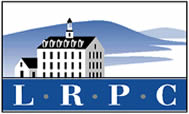HISTORIC PRESERVATION
Historic Preservation and Planning
Planning and preservation work together to: protect historic landscapes, foster economic development and downtown revitalization, preserve and manage growth of rural villages, conserve farmland, and to conserve residential housing stock. The American Planning Association supports efforts by local governments to integrate historic preservation into the land planning process by including preservation goals into the community master plan and reconciling and coordinating preservation policies with local development plans. Local governments should work together with citizens and interested groups to make preservation part of the overall effort to promote the general wellbeing of the community.
Master Plan
The starting point for preservation planning is the master plan. This town plan should have a chapter on historic preservation through which townspeople can have the opportunity to view their historic resources in a comprehensive fashion and identify the influences which have shaped their town in order to make sound preservation minded decisions. This section can be developed from local research of town histories, old maps, census records, and annual reports. A list of communities with Master Plans with historic chapters can be viewed below. In addition, a large part of this section is a cultural resource survey also known as a historic resource inventory. LRPC has worked with a number of communities to create inventories which can be viewed below. This should survey and document the location and significance of multiple town properties deemed noteworthy.
Historic Districts
One tool often used by planners to implement preservation in a community is through a historic district. In New Hampshire historic districts can be established (see NHRSA 674:46) and range in size and character from large commercial downtowns, to riverfront brick industrial complexes, and small clusters of buildings in 19th century village centers. A historic district may be a separate district, listed to the state or National Register of Historic Places, but is usually a zoning overlay district. While zoning addresses land use, a historic district covers the alteration, construction, and demolition of structures. Historic districts provide a degree of regulation over the use of properties within the district. The scope and degree of these regulation is voted on by the community who must also vote to create the district in the first place. A citizen commission oversees the district and can provide assistance to homeowners and approve construction and alterations to any property within.
How We Can Help
- The Lakes Region Planning Commission provides technical assistance to its member communities. One of the topics which we can help you with is local historic districts. We have model historic district ordinance, as well as copies of historic district ordinances which are used by other lakes region communities;
- The LRPC can meet with you to discuss the process of setting up a local historic district. We also have information which can be used to explain to the residents of your community what a local historic district is, and how it works”;
- In addition, once your historic district commission has drafted an ordinance we can review it for you. We will check to see if it contains all of the information needed to make it an effective and beneficial document to your community.
LRPC Historic Preservation and Planning Publications
Churches of Belknap County
Sample Historic District Ordinance town of “Granite” NH
Modern Example
1999 Lakes Region Tour Scenic Byway: Historic and Archaeological Resources
Inventories
Other Publications
Energy Efficiency in Historic Buildings
NH Certified Local Government program
Impact of Preservation in NH
Rural Conservation
Online Resources
American Planning Association - Policy Guide on Historic and Cultural Resources
National Parks Service - Historic Preservation Planning Program
National Parks Service - Historic Preservation Planning Laws, Regulations, Policies, Standards, and Guidelines
NH Division of Historic Resources
NH Preservation Alliance Website
NH Preservation Alliance - Community Planning Resources
NH Citizen Planner - Historic Preservation Resources
Links to town historic districts, commissions, or heritage commission
Ashland
Belmont
Center Harbor
Effingham
Franklin
Freedom
Gilford
Gilmanton
Hebron
Laconia
Moultonborough
New Hampton
Sanbornton
Wolfeboro
Towns with historic sections or chapters in their Master Plan
- Ashland - Chapter 9: Cultural and Historical Resources
- Alexandria – Historical Overview of Alexandria (pg 4 of Master Plan)
- Alton – Appendix B: Historical Community Background (pg 62)
- Andover – Chapter 11: Historical and Cultural Resources (pg 51 of Master Plan)
- Bristol – Town of Bristol Historic Resource Chapter
- Center Harbor – Chapter 7: Cultural and Historic Resources
- Franklin – Section 5: Historic Preservation & Downtown Franklin (pg 12 of Master Plan)
- Hebron – Chapter 5: Historical Resources (pg 86 of Master Plan)
- Laconia – Cultural and Historic Resources (pg 121 of Master Plan)
- Meredith – Chapter 2: Historical Overview of Meredith (pg 13 of Master Plan)
- Moultonborough – Chapter 6: Historical and Cultural Resources
- New Hampton – Chapter 4: Historical Resources (pg 55 of Master Plan)
- Tamworth – Chapter 12: Cultural & Historic Resources
- Tuftonboro – Chapter 3: Tuftonboro's Resources: Natural, Historic and Scenic
- Wolfeboro – Historic, Cultural and Scenic Resources (pg 79)
